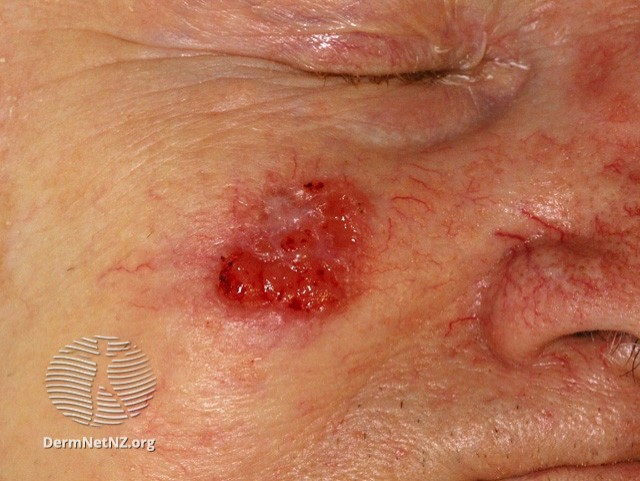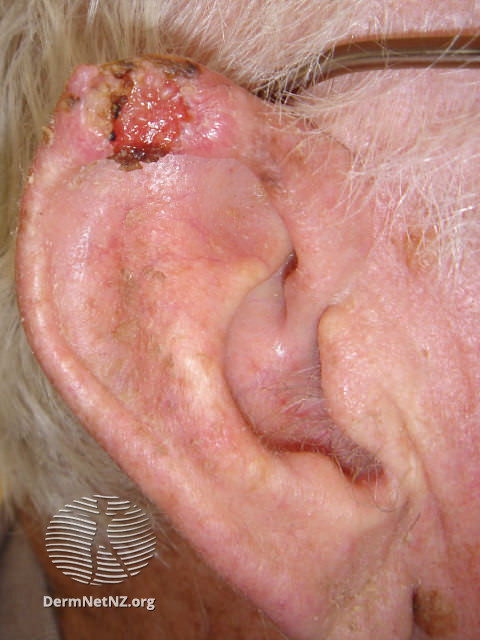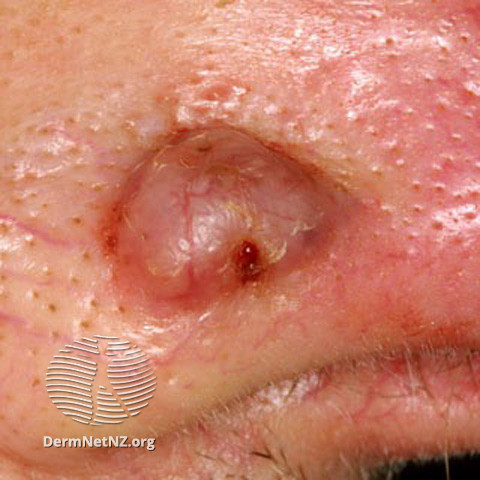Suspected squamous cell cerinoma (SCC)


SCC Ear

SCC Hand


Basal cell carcinoma (BCC)









Diagnostic Tips
Suspected squamous cell carcinoma (SCC)
- Squamous cell carcinoma usually develop on sun-exposed, sun damaged skin
- Men affected more than women especially on bald scalps
- Suspect keratotic nodules with thickened base
- Usually rapid growth compared with basal cell carcinoma
- Metastases occur in 5% of squamous carcinoma
Suspect Basal cell carcinoma (BCC)
- Usually slow growth often over several months or years
- Non-healing lesion which may bleed or crust
- Provide education on sun avoidance and photoprotection
- The risk of developing another BCC is high (40% over 5 years)
High Risk Squamous Cell Carcinoma
More likely if:
- Long term immunosuppression
- High risk sites, e.g. lips, ears and in scars
- Rapidly growing tumour
All images on this page have been sourced from Search DermNet | DermNet (dermnetnz.org)
R.C 18-05-23
Dermatology Referral Criteria
Criteria for referral-SCC
- All suspected SCC
- SCC excised in primary care should be discussed with local skin cancer MDT
Criteria for referral – BCC
- Any BCC which cannot be managed in Primary Care
- Diagnosis uncertain
- Morphoeic or sclerosing BCC with indistinct margins
- High risk sites e.g. naso-labial
- Cosmetically difficult sites e.g. periorbital
- High risk patients i.e. immunosuppressed
- Patients with multiple tumours
Management
Suspected squamous cell carcinoma (SCC)
Refer urgently to dermatology/Plastic surgery as per local pathways.
Suspected basal cell carcinoma (BCC)
Low risk BCC can be removed in primary care where an appropriate service is available.
Criteria for removal in Primary Care (BCC)
- Diagnosis certain
- Well defined margins
- BCC should be excised with a 4 mm lateral margin and a deep margin of 2 – 3 mm and a cuff of fat
- Warn patient about scarring
- Send all specimens to pathology
Link to PCDS squamous-cell-carcinoma guidance
Link to PCDS basal-cell-carcinoma-an-overview guidance













